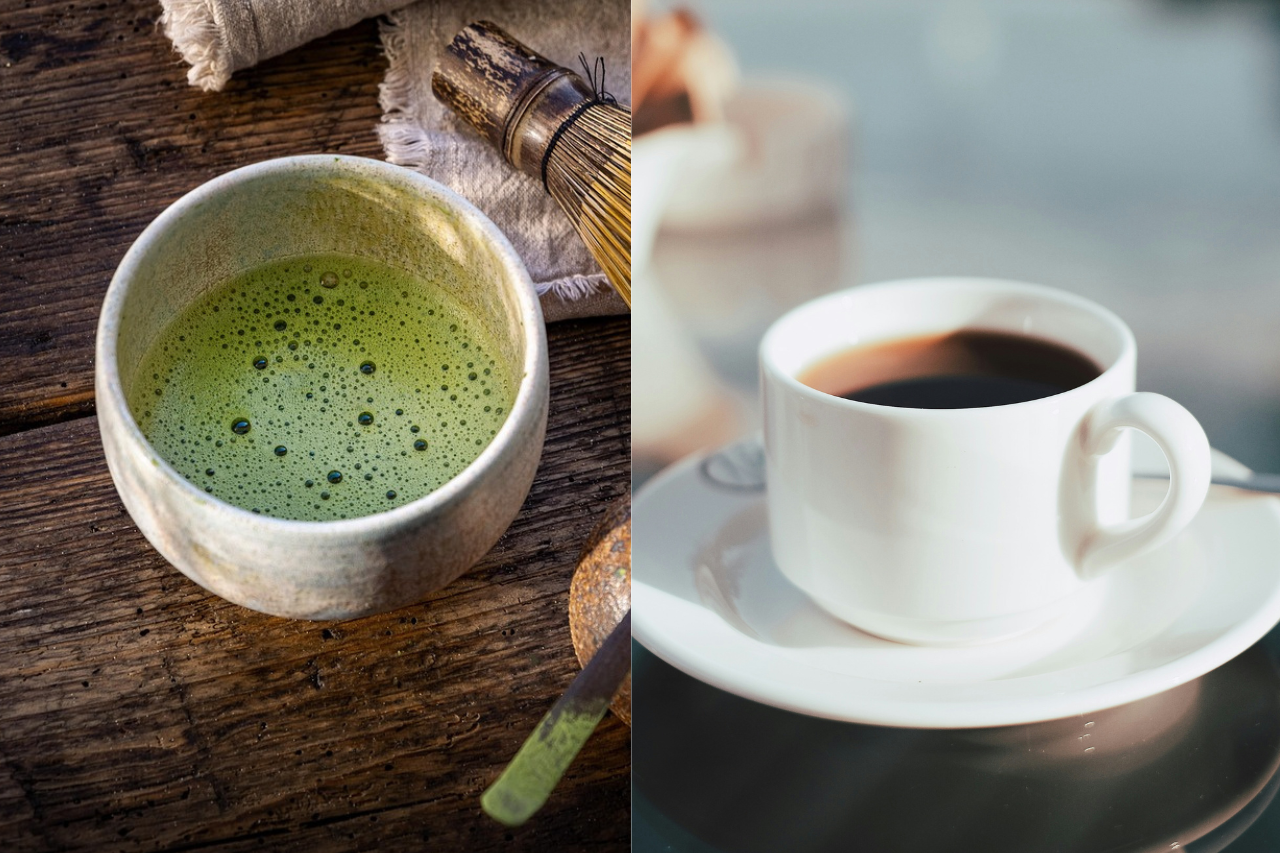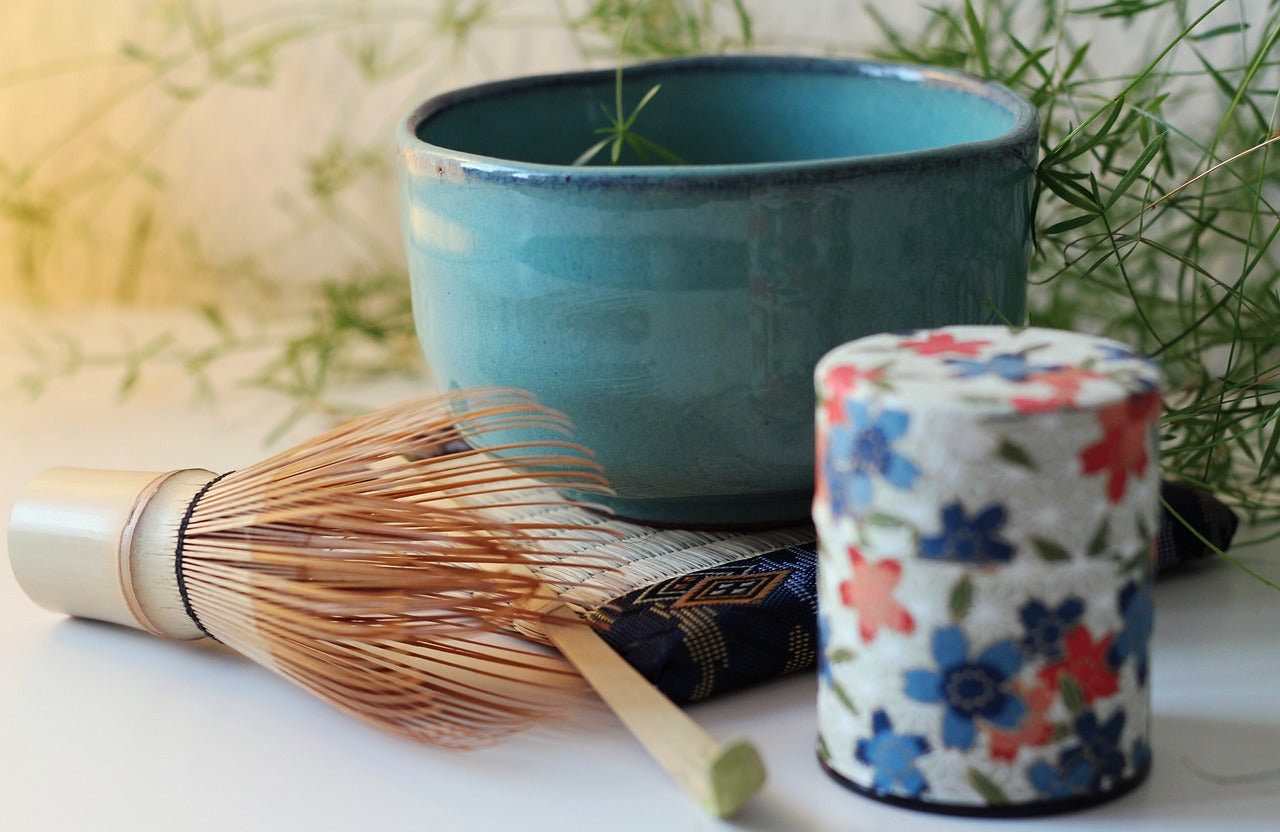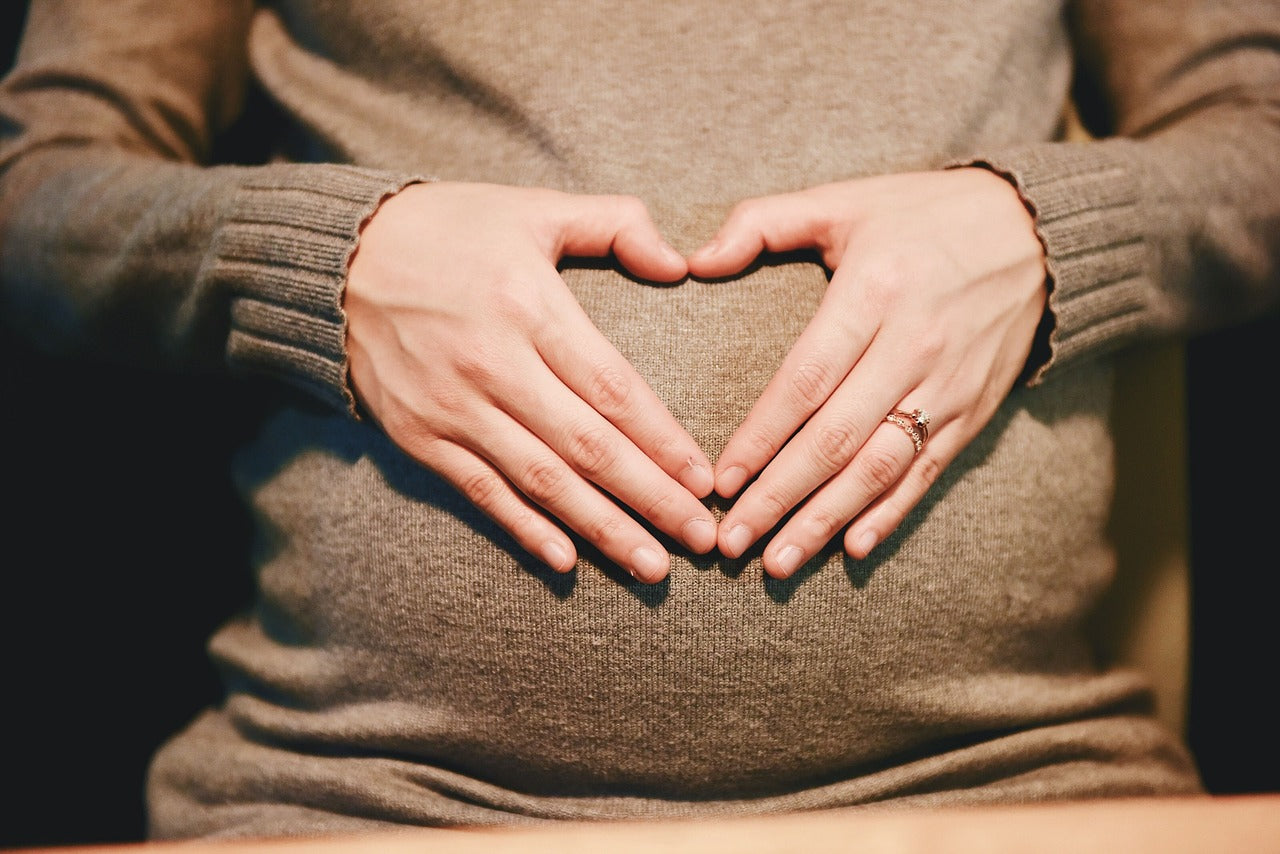From early morning rituals to mid-afternoon pick-me-ups, both matcha and coffee are beloved energy boosters with devoted global followings. But how do they really compare—especially when it comes to energy levels, health benefits, and everyday lifestyle?
Let’s dive into the science and culture behind each beverage to help you decide which one suits your needs best
Caffeine and Energy Levels

Both matcha and coffee contain caffeine, but how they deliver that energy is strikingly different.
| Matcha | Coffee | |
|---|---|---|
| Caffeine | ~35–70 mg per serving | ~95–120 mg per cup |
| Effect | Sustained, calm alertness | Rapid energy spike, fast crash |
| Compound | Contains L-theanine (calming) | Primarily caffeine |
Matcha offers a slow-release caffeine effect thanks to L-theanine, an amino acid that promotes alpha brain waves. This results in a focused calm—great for meditation, studying, or deep work.
Coffee, on the other hand, hits quickly. It boosts adrenaline and dopamine, delivering an instant jolt. However, this can sometimes lead to jitters or a caffeine crash.
Heart and Brain Health

Both matcha and coffee offer benefits for cardiovascular and cognitive health, but they work in different ways. Matcha is rich in catechins, particularly EGCG (epigallocatechin gallate), which has strong antioxidant properties. This compound may help lower LDL cholesterol and reduce the risk of heart disease. Similarly, coffee contains chlorogenic acid, another powerful antioxidant linked to reduced risks of heart disease and stroke.
Caffeine plays a key role in boosting mental alertness in both beverages. However, matcha contains the amino acid L-theanine, which moderates caffeine's stimulating effects. This combination helps promote a calm, focused state rather than a jolt of energy. In contrast, coffee delivers a quicker, more intense alertness that some people may prefer for early mornings or demanding tasks.
Side Effects & Tolerance

People respond to caffeine differently. For some, the higher caffeine content in coffee can cause jitteriness, anxiety, or disrupted sleep when consumed in excess. Coffee's caffeine is also absorbed quickly, which may make its effects feel stronger and more immediate—something not everyone tolerates well.
Matcha, while not low in caffeine, delivers its energy more gently. Thanks to L-theanine, its effects are smoother and more sustained, often without the “crash” that some people experience after drinking coffee. This makes matcha a popular choice for those who want long-lasting focus without overstimulation.
Both beverages have diuretic effects, but matcha provides additional benefits due to its rich nutritional profile. Because you consume the whole powdered leaf, matcha offers fiber, minerals, and antioxidants that can be gentler on the body, especially for those sensitive to caffeine
Flavor and Aroma

The taste and aroma of matcha and coffee are distinct and deeply personal. Matcha has a rich umami flavor, balanced bitterness, and a lingering sweetness that unfolds gradually. The fresh, grassy aroma adds to its calming and refined character—especially when made from high-quality first harvest leaves.
Coffee, on the other hand, offers a bolder, more roasted flavor with variations depending on bean origin and roast level. Notes of chocolate, nuts, or fruit may emerge, accompanied by a strong aroma that many find energizing and comforting.
If you're drawn to subtle, layered flavors, matcha may be your ideal cup. If you prefer bold intensity and deep aroma, coffee is likely your go-to.
Preparing Matcha: Ceremonial and Mindful

One of matcha’s most unique qualities is how it's prepared. The process of whisking matcha with a bamboo chasen becomes a calming ritual—a way to slow down, breathe deeply, and be present in the moment. This mindful preparation is rooted in Japanese tea ceremony traditions and offers a sense of peace that many find soothing in today’s fast-paced world.
At the same time, matcha has evolved with modern lifestyles. Younger generations now enjoy it in more casual ways—blending it with milk to create matcha lattes, adding it to smoothies, or baking it into desserts. Electric frothers and pre-measured sachets make it easy to enjoy matcha without ceremony, fitting seamlessly into busy routines.
Whether you're seeking a moment of mindfulness or a functional morning drink, matcha adapts to your needs while still offering its deep cultural and sensory richness.
Environmental and Sustainability Factors
Matcha is made from shade-grown tea leaves, requiring careful cultivation but generally involving less deforestation and fewer carbon emissions than coffee plantations.
Coffee farming can sometimes contribute to:
- Deforestation
- Water overuse
- Chemical fertilizer runoff
However, shade-grown, organic, and fair-trade coffee options are increasingly available.
Which One Is Right for You?
| Goal | Choose |
|---|---|
| Calm focus | Matcha |
| Instant energy | Coffee |
| Sensitive stomach | Matcha |
| Rich, bold flavor | Coffee |
| Weight management | Matcha |
| Daily ritual & balance | Matcha (ceremonial) |
| Fast-paced lifestyle | Coffee (drip or espresso) |
Ultimately, you don’t have to choose one over the other. Many people enjoy coffee in the morning and matcha in the afternoon, balancing energy with mindfulness.



